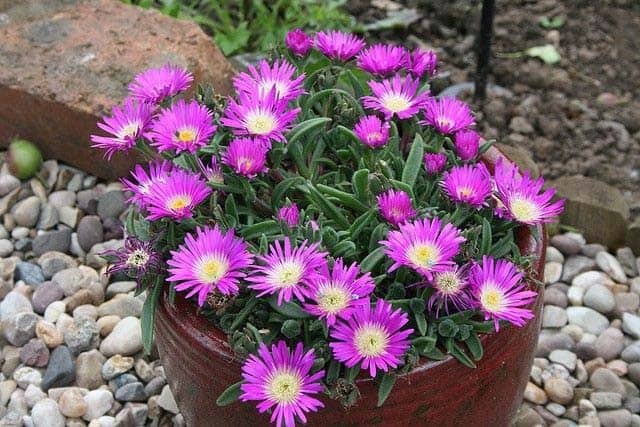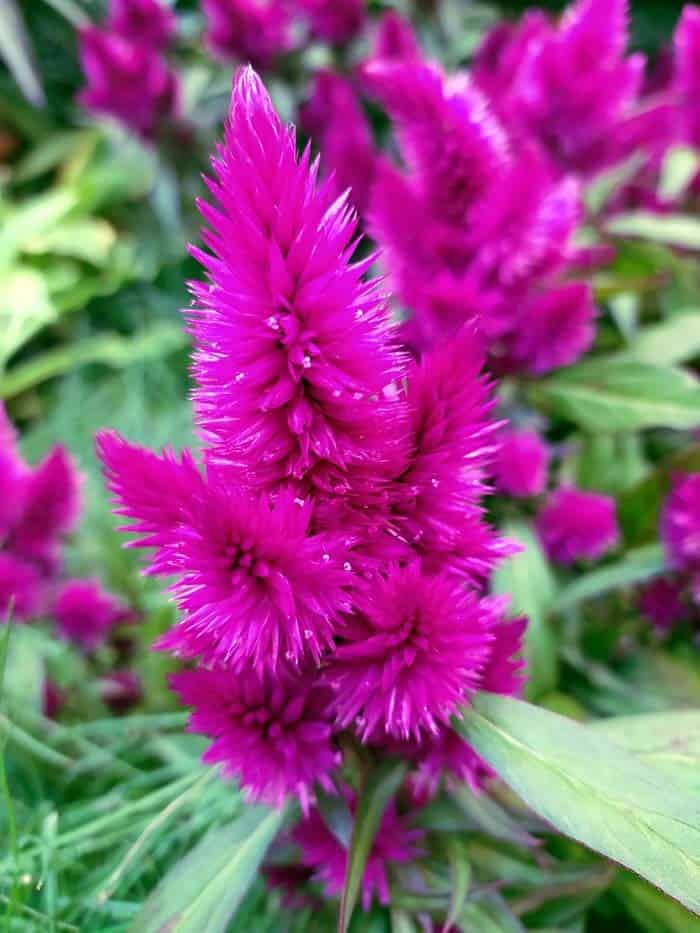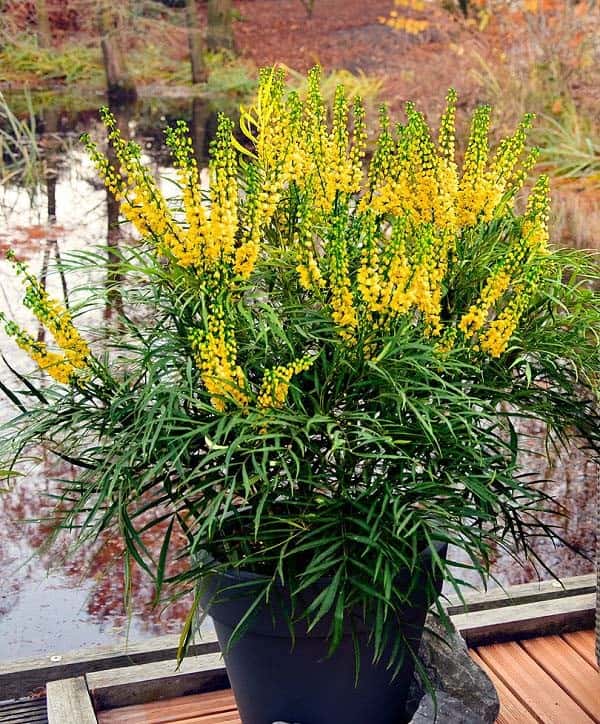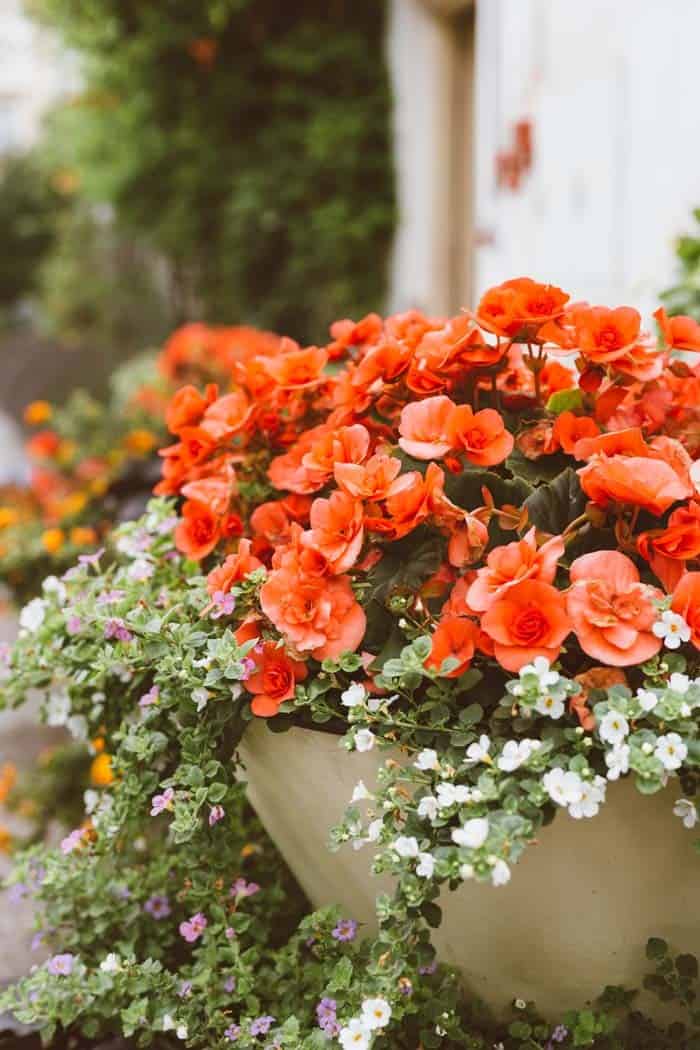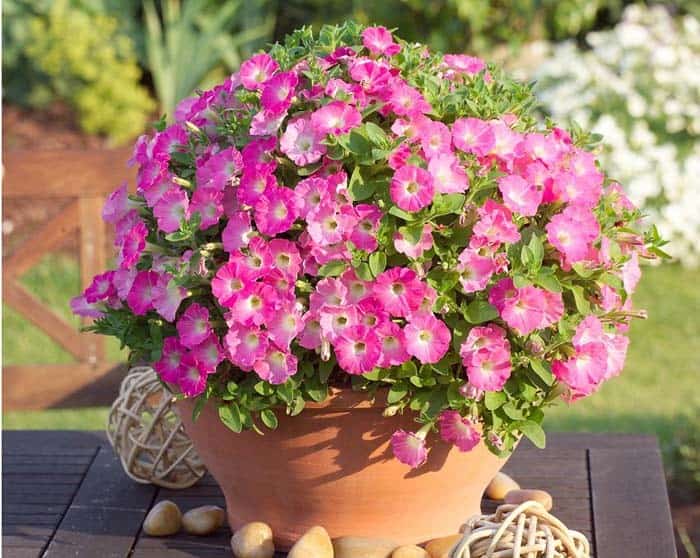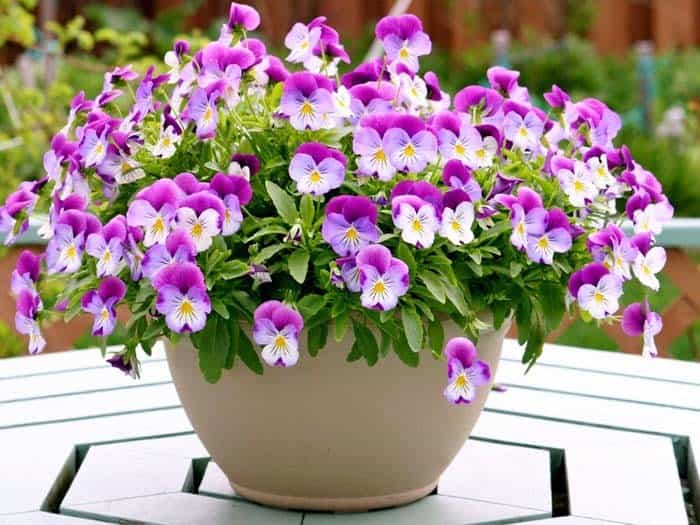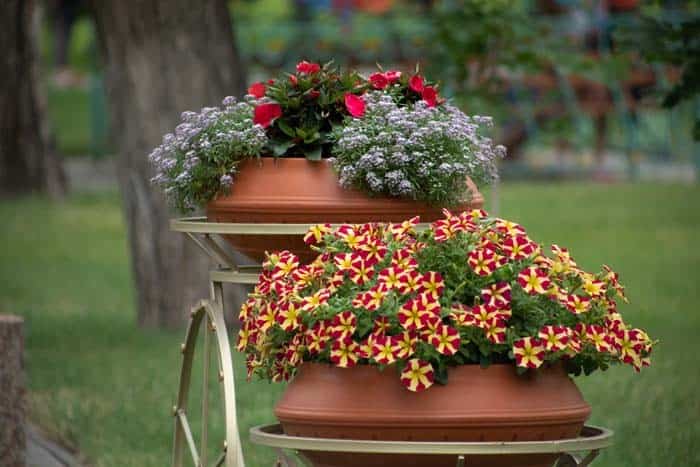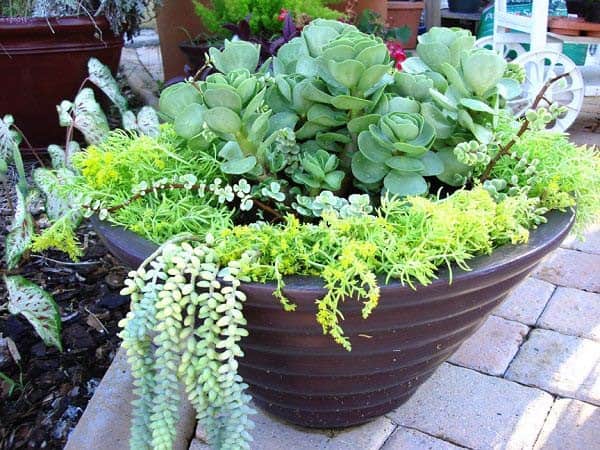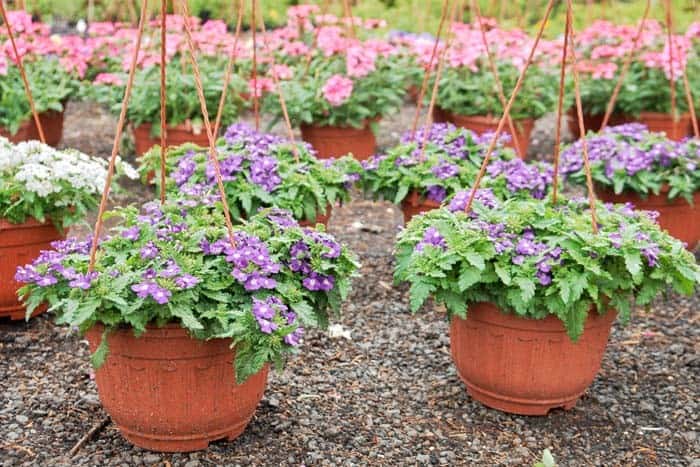As summer’s warmth begins to wane, don’t think the gardening party has to come to an end. In fact, the autumn season offers a unique opportunity to create vibrant and inviting container gardens that can add a pop of color to your outdoor spaces. The key is to choose plants that truly thrive in the cooler temperatures, which is why we’ve curated a list of the top fall flowers perfect for potting up. With these picks, you’ll be able to bring a festive touch to your porch, deck, or patio.
What can I plant in pots in the fall?
As the fleeting beauty of summer blooms fades, maintain a vibrant display all season long by selecting fall container plants that boast rich foliage and striking autumn hues. Strategically arranged potted plants can transform your front porch from unassuming to extraordinary. Here’s a curated list of stunning fall flowers to elevate your outdoor space.
Best Containers For Fall Flowers
To elevate your fall decor, we suggest incorporating these stunning planters that harmonize with the season’s warmth and coziness. Among our top picks are hanging basket planters featuring natural coco coir linings, resin pots in a sleek Kehlani design, stone urns by Blanchard Quartz, and vibrant blue ceramic planters that come as part of a set.
Aster
The aster, classified under the botanical name Asteraceae, thrives in USDA Zones 3-11. This charming flower brings a kaleidoscope of colors to your fall container garden, including vibrant shades of purple, white, blue, and pink. With its delicate and compact nature, every variety adds a whimsical touch to even the most meticulously designed outdoor spaces.
Black-Eyed Susan
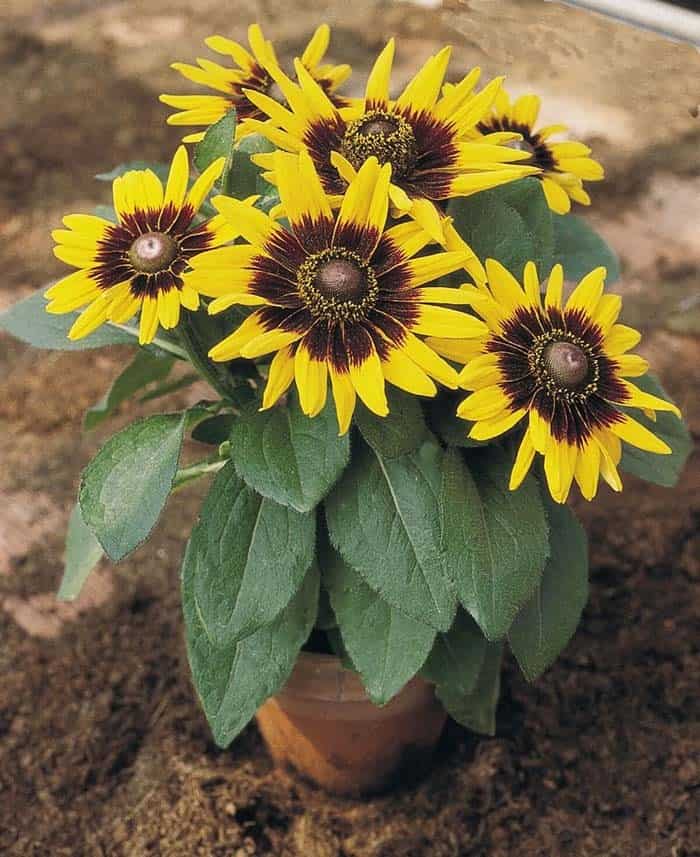
Discover the beauty of Rudbeckia, also known as black-eyed Susan. This stunning perennial thrives in USDA zones 3-8, making it an excellent addition to any fall garden. Its vibrant golden petals and dark-brown centers evoke the warmth and coziness of autumn, perfect for setting the tone for Halloween, Thanksgiving, or simply appreciating the changing leaves. One of its greatest appeals is its ease of growth, making it a great choice for busy gardeners.
With Rudbeckia, you can enjoy its gorgeous blooms all summer long.
Caryopteris
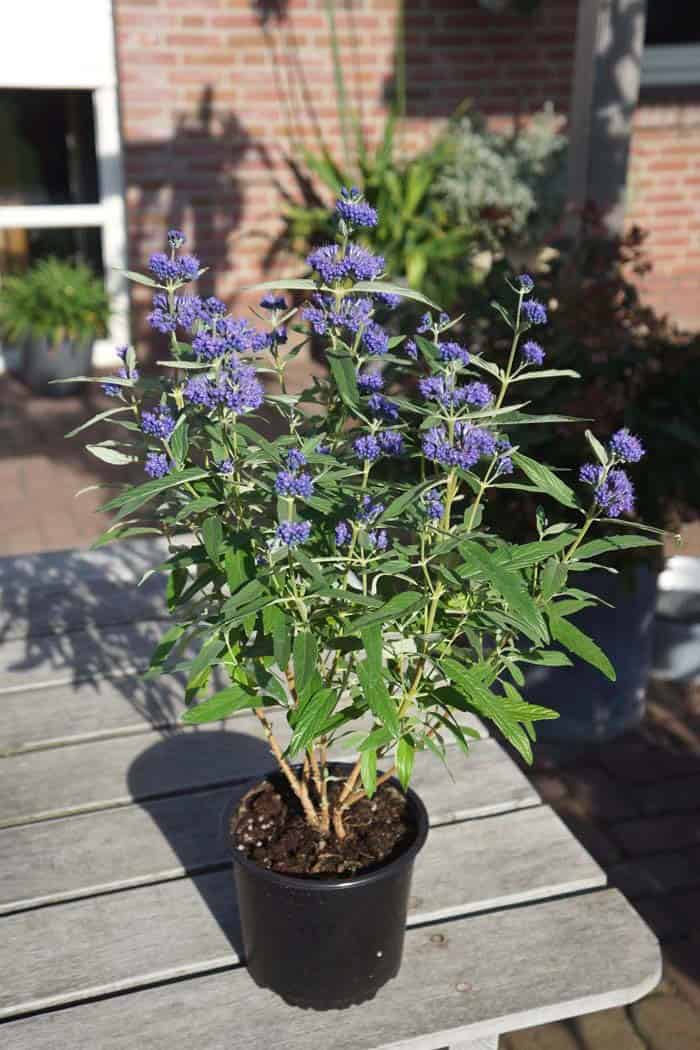
Add a touch of otherworldly beauty to your fall garden by incorporating caryopteris into your outdoor space. This unique plant boasts sturdy stems that rise vertically, supporting horizontal arrays of pointed grey-green leaves with an air of wild abandon. The crowning glory is the profusion of tiny purple flowers that tower above, drawing in bees and butterflies with their sweet nectar. Hardy enough to thrive in USDA zones 5-9, caryopteris is a delightful addition to any planter or garden bed.
Celosia
Celosia’s unique characteristics make it an ideal choice for a striking fall container garden. This versatile annual thrives in USDA zones 10-12 and is sure to turn heads with its striking grey-green leaves and vibrant purple flowers. What truly sets Celosia apart, however, is the shape of its blooms – they grow in multi-pronged spikes that give them an otherworldly, almost extraterrestrial appearance.
Whether you’re looking to add a pop of color or create a conversation-starting centerpiece, Celosia’s bold beauty is sure to impress.
Coleus
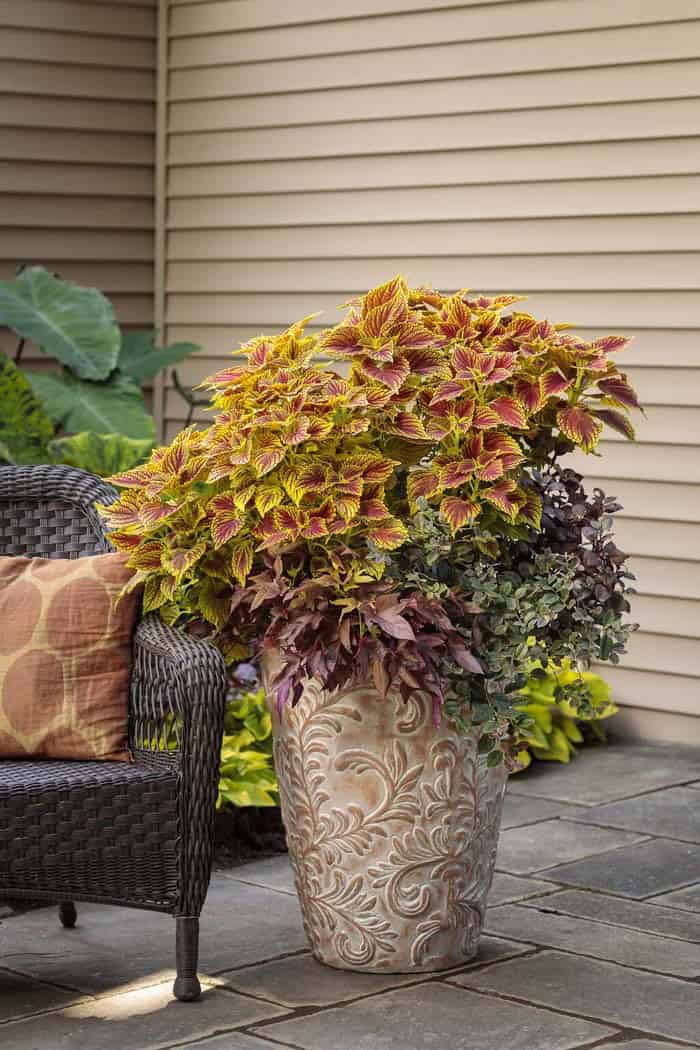
If you have an outdoor area that receives ample indirect sunlight, consider incorporating Coleus scutellarioides into your container garden. This striking variety boasts enormous, velvety red leaves with vibrant yellow edges, making it a showstopper in any setting. When planted in a tall planter, Coleus can grow several feet tall throughout the fall season, adding a pop of color and texture to your outdoor space.
According to the USDA, this plant thrives in zones 8-11, providing you with a reliable option for warm weather gardeners.
Coneflower
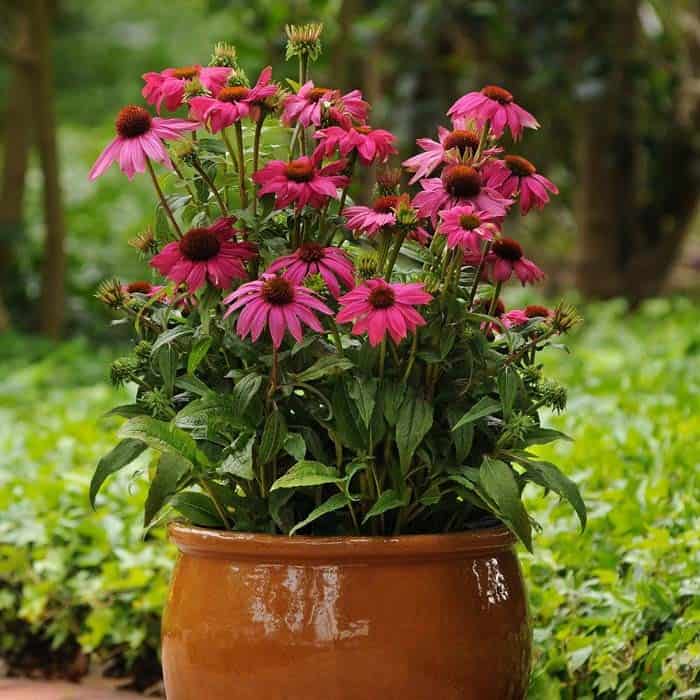
Echinacea, also known as the coneflower, boasts a unique appearance that justifies its name. The flower’s prominent feature is its tall, cone-shaped center, which can grow into a distinctive shape. This architectural quality is enhanced by the drooping petals that radiate outwards from the central hub, creating a daisy-like profile. One of the most striking aspects of coneflowers is their kaleidoscope of colors, ranging from deep oranges to vibrant pinks.
To ensure optimal growth and flowering, it’s essential to plant them in well-drained soil. With these conditions met, coneflowers can thrive in USDA zones 3-8.
Coral Bells
Heuchera, a versatile plant, thrives in USDA zones 4 to 11. If you’re looking for a showstopper to fill a large planter, coral bells (Heuchera) is an excellent choice. Before it produces flowers, this captivating plant displays vibrant, overlapping leaves that create a layered effect. As the foliage grows, it fills the space and adds dimension and texture to your garden. When the flower spikes finally emerge, they support the delicate bells, creating a charming display.
The richly colored leaves make Heuchera an ideal choice for autumn gardens.
Goldenrod
Goldenrod (Solidago) is a versatile and cheerful addition to any outdoor space, particularly when used as a statement piece in front entryways. Its botanical name may be Solidago, but its real claim to fame lies in its ability to thrive in USDA zones 4 through 9. Two potted goldenrod plants flanking the door can create a stunning visual display that will brighten up the summer and autumn months alike.
Each plant produces multiple flower spikes, resulting in a vibrant tapestry of color that is sure to draw attention.
Impatiens
For those seeking fall flowers that flourish in shaded spots, Impatiens walleriana (Impatiens) is an excellent choice. This vibrant plant’s blooms thrive in areas with minimal direct sunlight, making it perfect for placement under a covered porch or beneath the canopy of a large tree. While Impatiens do require regular care, including frequent watering and fertilization, their striking colors make them well worth the extra effort.
Marigold
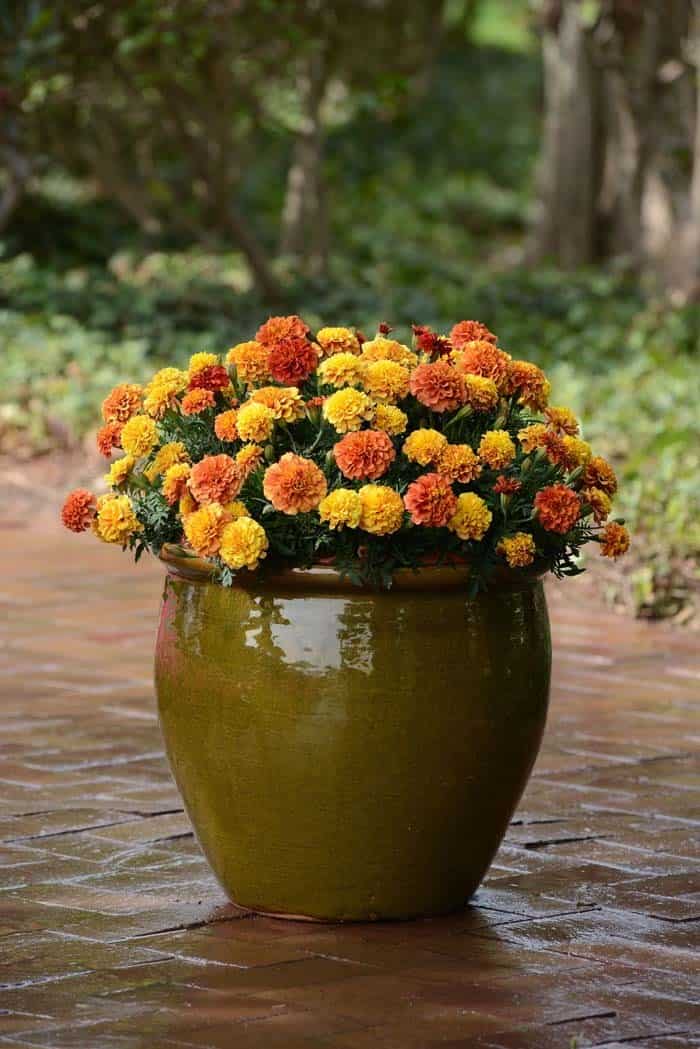
The Tagetes species, commonly known as marigold, is an ideal addition to fall plant arrangements when the summer season comes to a close (USDA Zones 2-11). These vibrant yellow blooms are sure to brighten up any room with their radiant color. For maximum enjoyment, consider potting them in smaller containers and bringing them indoors before the first frost for continued growth throughout the winter months.
Million Bells
Calibrachoa, commonly known as Million Bells, is a flowering annual that thrives in USDA zones 9-11. One of its most striking features is the abundance of small, delicate blooms it produces, creating a lush and vibrant display when grown in containers or hanging baskets. To showcase these flowers to their fullest potential, it’s essential to choose a planter with sufficient height, as the stems will naturally cascade over the sides as they grow.
A highlight of this plant is its consistent flowering period from late summer through the first frost, showcasing a palette of lovely orange and yellow hues.
Mums
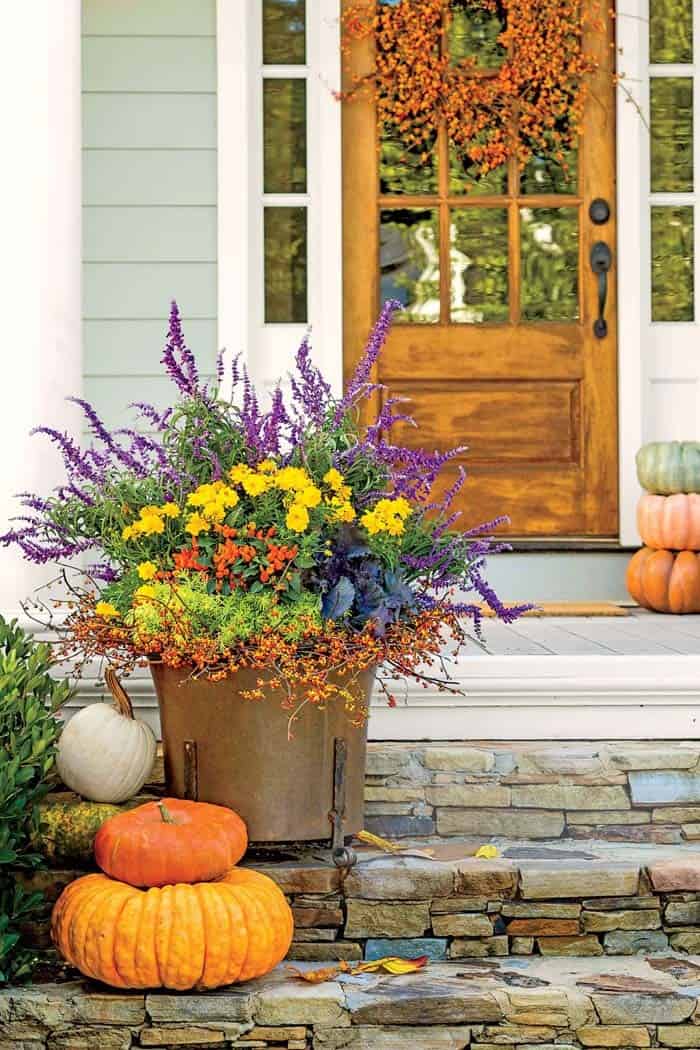
The chrysanthemum, or mum, is a popular fall flower that thrives in USDA zones 3-11. This vibrant plant boasts an array of autumnal hues, including golden, orange, and crimson tones, making it the perfect addition to any seasonal display.
When selecting mums for potted arrangements, choose varieties that are just beginning to bloom or haven’t yet reached their full flowering potential. This way, you’ll be rewarded with a burst of fresh color after transplanting.
The chrysanthemum’s unique beauty makes it an excellent choice for fall gardening and decorating, as showcased in the 26 beautiful fall gardening ideas and decorations featured elsewhere.
Ornamental Cabbage
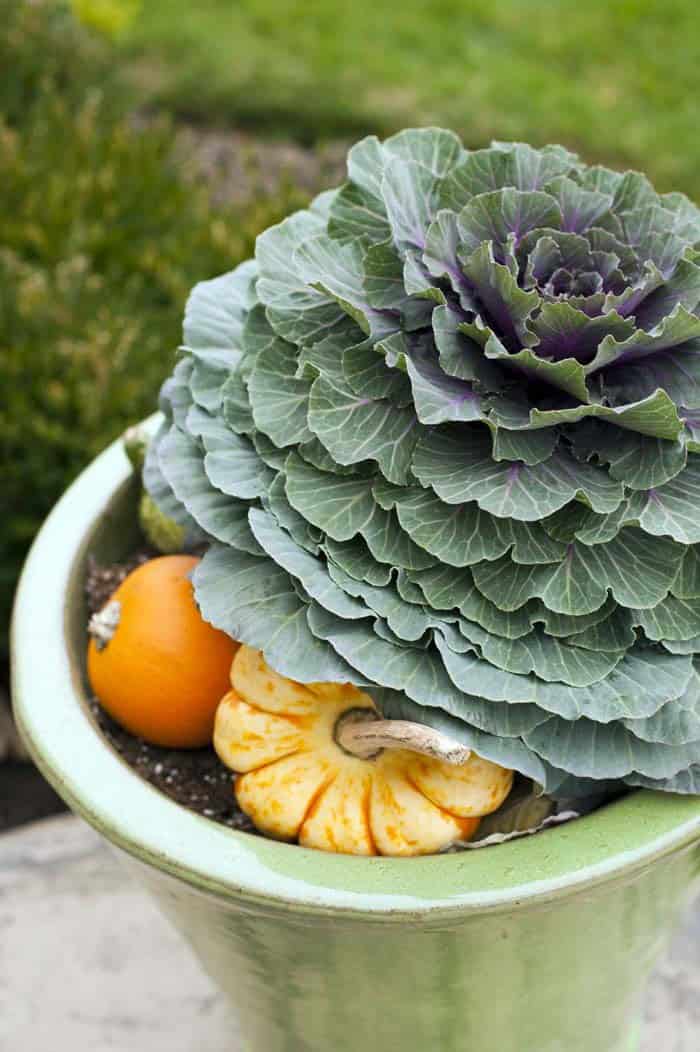
The whimsical Brassica oleracea, also known as ornamental cabbage, is a standout in any garden. Its impressive size and intricate foliage evoke a sense of fantasy, making it impossible not to smile when gazing upon this charming plant. A single pot can be transformed into a stunning display by incorporating squash or miniature pumpkins around its base, adding an extra layer of fall festivity.
This inedible variety thrives in USDA zones 2-11, ensuring its popularity across a broad geographic range.
Oxalis
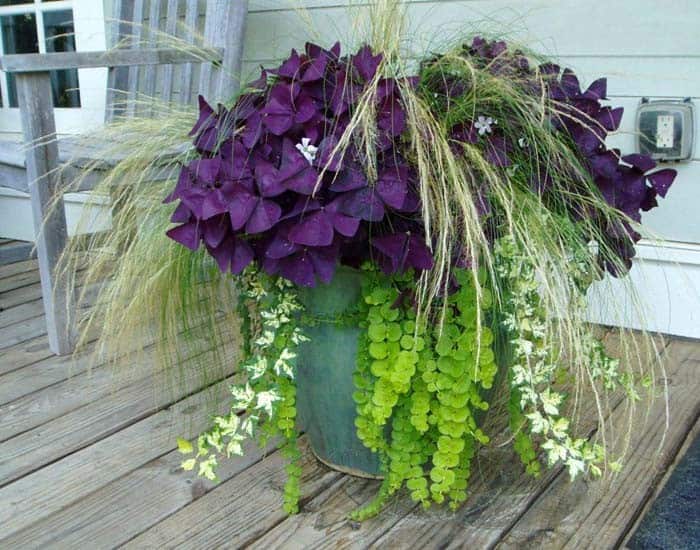
The Oxalidaceae family may not be as well-known for its ornamental plants as some others, but it’s definitely worth exploring. This family of plants is hardy in USDA zones 7 to 11 and can add a touch of fall color to your porch or garden. The real showstopper here are the triangular leaves, which can come in a range of colors including deep purples that evoke a moody atmosphere. In late summer, tiny pale-pink flowers start to bloom, creating a beautiful contrast with their surroundings.
Pansy
The charming Viola tricolor var. hortensis boasts a unique botanical name that belies its understated beauty. This autumn-blooming pansy thrives in USDA Zones 6-11, making it an excellent choice for gardeners in temperate climates. The flower’s smooth, rounded petals and soft velvety surface make it an instant front porch or step upgrade. What’s more, this hardy perennial can withstand cooler temperatures, making it perfect for gardens with a shorter growing season.
As winter approaches, simply bring your pots indoors to brighten up the kitchen and enjoy the pansy’s cheerful blooms year-round.
Petunias
Petunias (Botanical name: Petunia) are commonly thought of as a summer bloom, but with proper care, they can continue to thrive and provide vibrant color well into the fall season. With USDA hardiness zones ranging from 9 to 11, these flowers offer a stunning visual display when paired with autumnal yellow and orange hues. The rich purple, white, and pink tones create a riot of color that’s sure to delight, making them an excellent choice for adding a pop of color to your fall garden.
Sneezeweeds
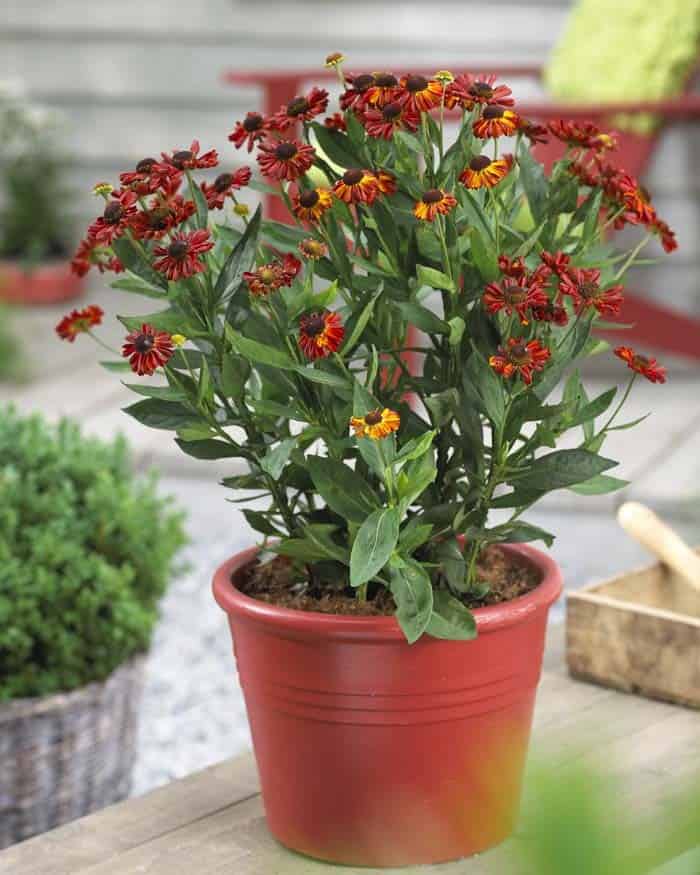
Helenium, also affectionately known as ‘Sneezeweeds,’ is a showstopping perennial that thrives in USDA zones 3 to 8. This eye-catching plant produces massive blooms in a kaleidoscope of colors – think pink, red, orange, and yellow hues – punctuated by striking black and yellow centers. The result is a stunning display that’s sure to brighten up any outdoor space or indoor arrangement when cut for display.
Stonecrop
The Sedum, also known as stonecrop, is a resilient succulent that thrives in USDA Zones 4-10. Its hardiness allows it to withstand varying weather conditions with ease. Unlike some plants, Sedum can survive frost without suffering damage, making it an excellent choice for forgetful gardeners. Additionally, its adaptability enables you to place it almost anywhere, eliminating the need for constant relocation.
Its attractive appearance ensures it will remain a beautiful addition to your outdoor space regardless of the season.
Sweet Autumn Clematis
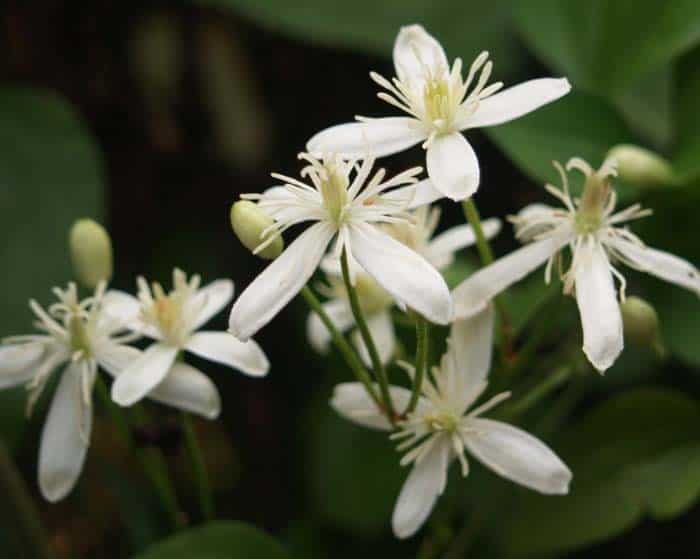
The Sweet Autumn Clematis (Clematis terniflora) is a charming addition to any fall container garden, offering a delicate charm that’s sure to delight. This low-maintenance perennial blooms in shades of orange and yellow, featuring four dainty petals and a wispy center on slender green stems. Whether used as a solo statement piece or paired with vibrant green foliage, the Sweet Autumn Clematis is sure to add a touch of whimsy to your outdoor space.
Plus, its sweet fragrance is the perfect accompaniment to an afternoon cup of tea on the porch. Growing in USDA zones 4-11, this versatile flower is easy to care for and can thrive in a variety of conditions.
Toad Lily
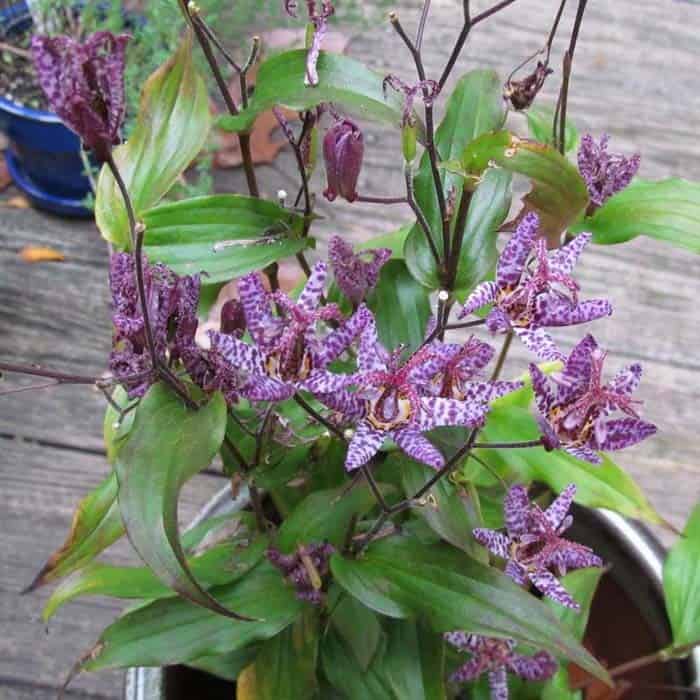
The Tricyrtis hirta, commonly known as toad lily, stands out from other fall flowers with its unique characteristics. This perennial boasts large petals featuring an intriguing dark and light pattern that evokes the texture of a toad’s skin. While its unusual appearance may be reminiscent of amphibians, the toad lily is anything but primitive – it exudes elegance and sophistication, making it an excellent choice for showcasing on your front porch or backyard deck.
In USDA zones 4-9, this captivating flower thrives, adding a touch of whimsy to any garden setting.
Verbena
Verbena’s botanical name is a significant aspect to consider when planting this stunning flower. The USDA zones that this plant thrives in are 7-9, making it an ideal choice for gardeners living within these regions. What sets verbena apart from other flowering plants is its ability to bloom during the summer months and continue producing vibrant clusters of flowers well into the autumn season.
This makes it a fantastic option for busy gardeners who may not have time to tend to a fresh planting in the fall. Simply plant verbena alongside your summer blooms, and you can enjoy its beauty until the first frost sets in. Verbena’s trailing stems also make it an excellent choice for hanging planters, as they will cascade down the sides of the container, adding an extra layer of visual impact to your garden or indoor space.

